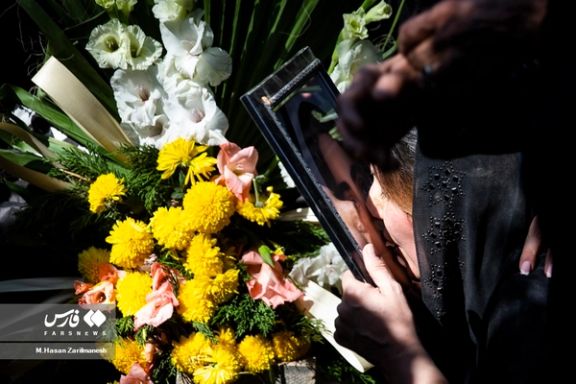Friends Say Armita Was Adamant Anti-Hijab Activist

Like most teens, Iran's latest hijab victim, Armita Geravand, was an opinionated young woman who liked to defy convention, including cutting her hair short and rebelling against hijab.

Like most teens, Iran's latest hijab victim, Armita Geravand, was an opinionated young woman who liked to defy convention, including cutting her hair short and rebelling against hijab.
Another tragic victim of state violence, Armita was laid to rest in Tehran’s cemetery after about a month in a coma due to brain injury inflicted during her encounter with Hijab enforcers deployed at the capital’s subway stations.
Two of her friends, who were denied visiting Armita in her last days at Fajr military hospital during her last days, talked to Iran International about their friend, who has been the latest martyr of Iranians' fight against the Islamic regime and its ideologies.
Fearing the wrath of the regime, all of them spoke on condition of anonymity due to the security risks involved. A high ranking police officer was always present in Armita’s room in those final days and her friends and family were neither allowed to visit nor take photos as she lay lifeless in hospital.
The Islamic Republic continues to try and exonerate its hijab enforcers from the incident to avoid the mass protests that would ensue as they did following the death to Mahsa Amini, whose death bore chilling similarities to that of Armita. Some doctored footage however, has failed to convince Iranians.
In both cases, Iranian authorities imposed a full ban on reporting about Armita's death, families intimidated into not speaking to the media.

The death of Armita has reignited anti-regime sentiments with people once more chanting slogans from their rooftops and windows the night she was pronounced dead. The regime can only hope that simmering tensions do not result in a repeat of the uprising of 2022 which became the greatest challenge to the regime since its establishment in 1979.
No matter the censorship and intimidation, the public already made their minds up. One of Armita's friends, in response to Iran International's question about what they think happened to Armita, said, "The same thing that the Islamic Republic doesn't want us to say; the same thing that happened to Mahsa."
Since the day Mahsa Amini died in the hands of the regime’s hijab enforcers, a growing number of Iranian women have been defying the Islamic Republic's compulsory hijab rules. Losing control, the regime has leveled up its hijab enforcement and updated its laws to criminalize non-compliance via harsher penalties but has failed to re-establish compliance.
Another one of her friends recounted a story where Armita was confronted by a cleric asking why she was not covering her head. She boldly told the cleric, “Did I ask you why you wrapped a fabric around your head?” referring to his turban, adding, “Then, you have no right to tell me why I didn't!”
During her comatose days and after her death, tiny details of Armita’s life have been trickling online through her family and friends. The teenager, who voluntarily made all the walls of her school into amateur art, has her own room decorated with miscellaneous memorabilia. An old stamp with the photo of Iran’s last shah Mohammad-Reza Pahlavi on her wall has especially attracted the attention of Iranian royalists, who claim Armita was cognizant of Iran’s recent history.

According to her friends, Armita liked horror movies, was a fan of Iran’s Reds football club and Spain’s Barcelona. Rooted in her heritage, she loved Zereshk Polo Morgh (Iranian rice with barberry and chicken) and her regular hangout was the Frost Flower (Gol-e Yakh) café at Tehran’s Pirouzi street where she lived.
It remains unknown what exactly happened on October 1 but for the Iranian public, it is a painful case of history repeating. No matter what killed Armita, she was an Iranian not represented by the Islamic Republic and the latest – but not the last -- killed for that.